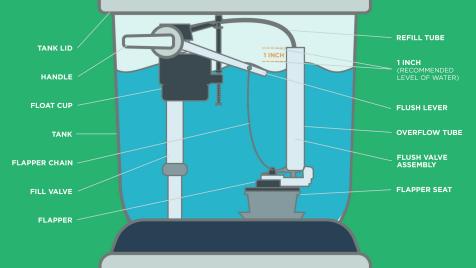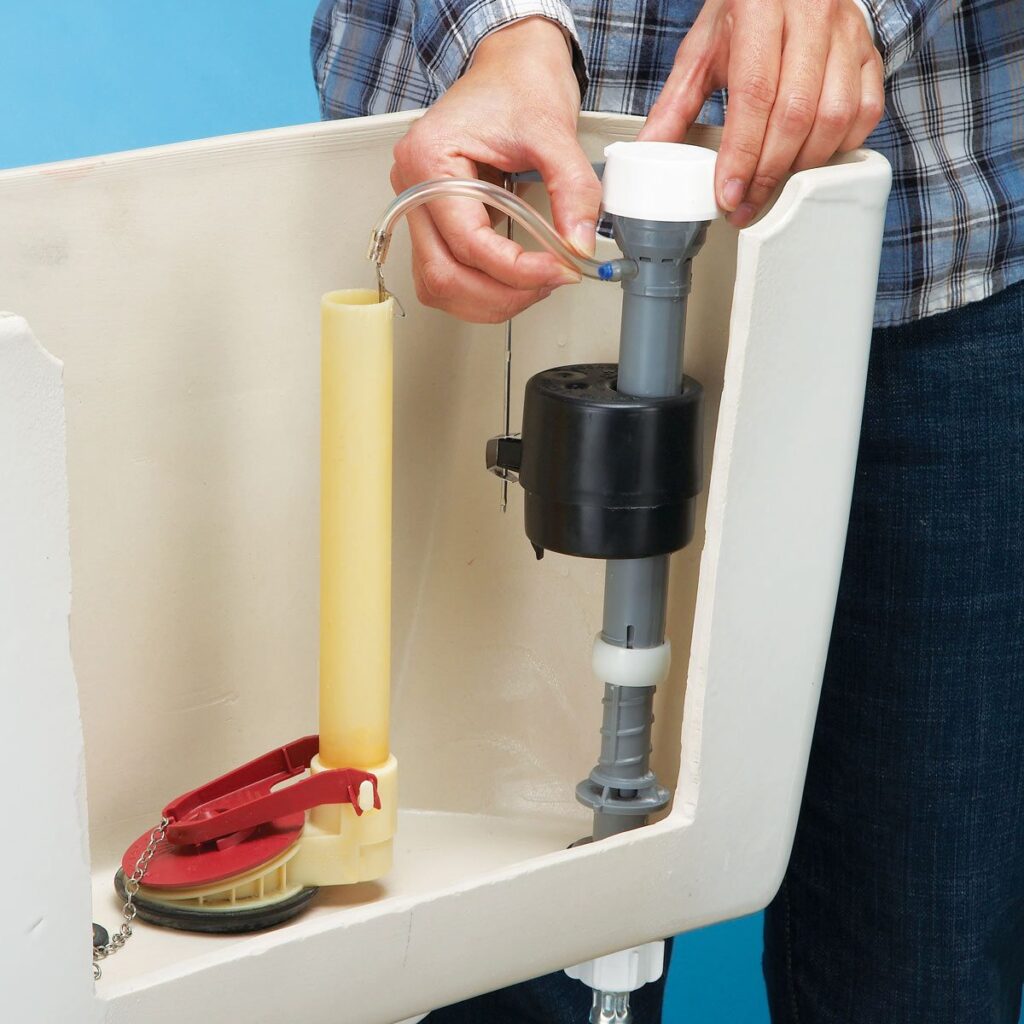
In this article, we will be sharing with you some tips on how to fix running toilets. We understand that a running toilet can be quite annoying and wasteful, so we want to help you find a solution. Throughout the article, we will discuss common causes of running toilets, step-by-step instructions on how to fix them, and some preventive measures to keep them from happening again in the future. By the end of the article, you will have the knowledge and confidence to tackle this household issue on your own.
Common Issues with Running Toilets
When it comes to maintaining a functional and efficient home, few things are more important than a properly working toilet. However, it’s not uncommon to encounter problems with a running toilet. This can be a nuisance and a waste of water, not to mention the potential increase in your water bill. Luckily, many common issues with running toilets can be fixed easily and quickly. In this article, we will walk you through the diagnostic and troubleshooting steps, as well as provide you with the appropriate fixes for common problems, so you can successfully repair your running toilet.
Continuous Water Running
One of the most common issues with a running toilet is when water continues to flow into the toilet bowl long after a flush. This can be caused by several factors, including a faulty flapper, a misaligned chain, or a problem with the fill valve. To identify the root cause of the continuous water running, follow the diagnostic and troubleshooting steps below.
Weak or Incomplete Flush
Another common issue is experiencing a weak or incomplete flush. If you notice that the water in the toilet bowl is not draining properly or that the flush does not have enough force, it is likely that your toilet has a problem. This can be caused by a variety of factors, such as a misaligned chain or lift wires, clogged flush holes, or an incorrect water level in the tank. We will guide you through the diagnostic and troubleshooting steps to help you fix this issue.
Leaky or Faulty Flapper
A leaky or faulty flapper can also lead to a running toilet. The flapper is responsible for controlling the flow of water from the tank into the bowl during a flush. If the flapper does not seal properly or is damaged, water can continuously leak into the bowl, causing the toilet to run. We will show you how to diagnose and fix this issue in the troubleshooting steps below.
Diagnostic and Troubleshooting Steps
Before diving into the various fixes for common running toilet problems, it’s essential to pinpoint the exact issue. By following these diagnostic and troubleshooting steps, you can identify the problem and proceed with the appropriate repair solution.
Check the Flapper
To begin, check the flapper for any visible signs of damage or misalignment. Lift the toilet tank lid and look for the rubber flapper at the bottom center of the tank. Ensure that the flapper is properly aligned and making a complete seal against the flush valve seat. If it appears worn or cracked, it is likely the cause of the continuous water running.
Inspect the Fill Valve
Next, inspect the fill valve, which is responsible for refilling the tank after a flush. Ensure that the water level in the tank reaches the fill line marked inside the tank. If the water level is too low, it could result in a weak or incomplete flush. Adjust the fill valve, if necessary, to ensure the correct water level.
Examine the Flush Valve
Lastly, examine the flush valve for any blockages or debris that may be hindering water flow. The flush valve is located at the bottom center of the tank and allows water to exit the tank and enter the bowl during a flush. Use a flashlight to inspect the flush valve and remove any obstructions that may be present.
Fixing Continuous Water Running
If you have identified continuous water running as the issue with your running toilet, here are some fixes to consider:
Adjust the Flapper Chain
If the flapper chain is too long or too short, it can prevent the flapper from seating properly. Adjust the length of the chain by pulling it or releasing it to ensure a tight seal when the flapper is closed.
Replace the Flapper
If the flapper is damaged, worn, or unable to create a proper seal, it should be replaced. Start by turning off the water supply to the toilet, flush to drain the tank, and remove the old flapper. Install a new flapper according to the manufacturer’s instructions and ensure it fits securely.
Clean or Replace the Fill Tube
If the fill tube is clogged or damaged, it can prevent the tank from properly filling with water. Remove the fill tube and inspect it for any debris or cracks. Clean or replace the fill tube if necessary, and reattach it securely to the fill valve.
Fixing Weak or Incomplete Flush
If a weak or incomplete flush is the issue with your running toilet, consider these fixes:
Adjust the Chain or Lift Wires
If the chain or lift wires connecting the flush lever to the flapper are too loose or too tight, it can affect the flush. Ensure that the chain has enough slack to allow the flapper to fully open and close during a flush. Adjust the chain or lift wires accordingly for a proper flush.
Clean or Replace the Flush Holes
Over time, the flush holes under the rim of the toilet bowl can become clogged with mineral deposits or debris, resulting in a weak flush. Use a toilet brush and a mild cleaner to clean the flush holes and remove any obstructions. If the holes are severely clogged, consider using a wire hanger or a small brush to remove the deposits.
Check Tank Water Level
If the water level in the tank is too low, it can result in a weak flush. Adjust the fill valve to ensure that the water reaches the fill line indicated inside the tank. This will ensure an adequate supply of water for a proper flush.

Fixing Leaky or Faulty Flapper
If a leaky or faulty flapper is causing your toilet to run, these fixes can help:
Check for Proper Sealing
Ensure that the flapper is sitting properly on the flush valve seat and creating a watertight seal. If the flapper is misaligned or not sealing correctly, adjust its position or replace it with a new one.
Clean or Replace the Flapper Seat
Over time, mineral deposits or debris can accumulate on the flush valve seat, preventing the flapper from sealing properly. Remove the flapper and clean the flush valve seat using a gentle cleanser and a soft cloth or sponge. If the seat is damaged or worn, consider replacing it.
Polish the Flapper
If the flapper is still leaking even after cleaning and adjustment, you can try polishing its surface with a soft cloth or sandpaper. This can help remove any rough edges or imperfections that may be causing the leak.
Replace the Flush Valve Assembly
If all else fails, and you have exhausted all troubleshooting options, it may be necessary to replace the entire flush valve assembly. This can be a more complex repair and may require the assistance of a professional plumber.
Additional Tips and Maintenance
To ensure that your toilet continues to function properly and prevent running issues, consider these additional tips and maintenance routines:
Keep the Toilet Tank Clean
Regularly clean the toilet tank to remove any mineral deposits or debris that may affect its performance. Use a toilet cleaner and a scrub brush to clean the inside of the tank, including the walls and all components.
Regularly Check Toilet Components
Periodically inspect all the components in your toilet, such as the flapper, fill valve, chain, and flush valve. Look for signs of wear or damage and replace any faulty parts immediately.
Consider Water-Saving Devices
To conserve water and reduce the likelihood of running toilet issues, consider installing water-saving devices such as a dual-flush mechanism or a toilet fill cycle diverter. These devices can help regulate water flow and usage, ultimately saving you money on your water bill.

Conclusion
Fixing a running toilet can be a relatively simple process once you identify the specific issue. By following the diagnostic and troubleshooting steps outlined in this article and using the appropriate fixes for common problems, you can successfully repair your running toilet. Preventing water wastage is not only environmentally responsible but also saves you money. Additionally, implementing regular maintenance routines and considering water-saving devices can help avoid future running toilet issues. Remember, if you are unsure or uncomfortable with any of the repair processes, it is always recommended to seek professional assistance.
